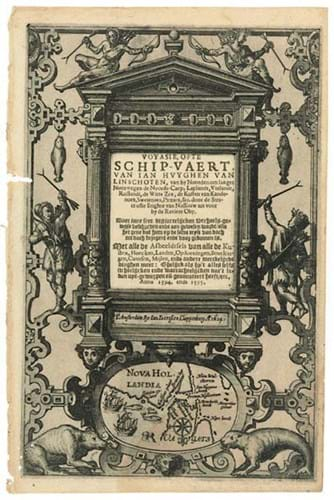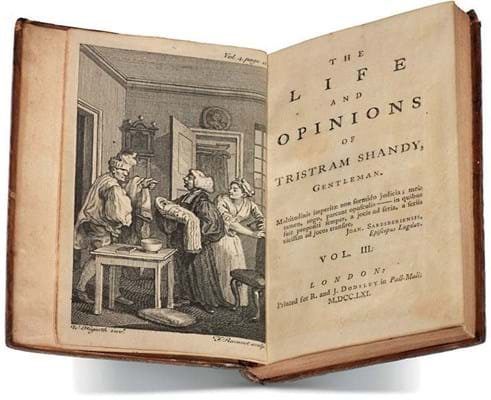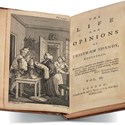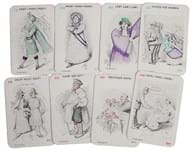A number of very successful lots sold in the King Street auction of July 11, one that grossed £6.2m including premiums, have already appeared in earlier issues.
Newton Opticks
Sold at a mid-estimate £65,000 was a fine, first-issue copy in a contemporary English binding of Isaac Newton’s revolutionary work on light and colour, his Opticks… of 1704.
The only copy to have made more at auction – but an awful lot more – was the one that Newton gave to the astronomer Edmund Halley, his Royal Society colleague and supporter and the man who in 1687 had both ensured the publication and paid for the printing of Newton’s great Principia Mathematica.
At Sotheby’s New York in December 2015 that copy made $1.1m (then about £740,000) as a rather odd inclusion in the Robert S Pirie collection of 16th and 17th century English literature.
A 1638 first of Galileo Gallilei’s Discorsi e dimostrazioni mathematiche…, regarded as the first modern textbook of physics and a foundation work in the science of mechanics, sold for £45,000.
That, too, is an auction price that has only once been bettered, I believe, but the major Galileo attraction of this year seems most likely to be found in a forthcoming sale at Sotheby’s – see separate preview.
Sterne Shandy
A literary record was probably set when a first-edition, first-state set of the nine volumes of 1760-67 that make up Lawrence Sterne’s The Life and Opinions of Tristram Shandy, Gentleman was bid to £14,500.
The author’s signature appears, as usual, at the head of the opening chapters of the fifth, seventh and ninth volumes. According to an early inscription in the first volume, this was a set, bound in contemporary speckled calf, that once belonged to King George III.
Samuel Johnson, along with Oliver Goldsmith, Samuel Richardson and Horace Walpole were among those who disliked the work. However, Sterne was feted when he later visited London, had his portrait taken by Reynolds and had been presented to the king.
A handsome-looking copy in contemporary calf gilt of the 1755 first of Johnson’s Dictionary of the English Language sold at £13,000.
One of only two recorded copies of the second edition of Claes Jansz Visscher’s great panorama of London, completely redrawn and printed from new plates c.1625 – nine years after the appearance of the first and again very rare first edition – sold for £85,000.
Printed on four sheets and measuring roughly 18in x 7ft (27cm x 2.11m) to the plate edges, it is a panoramic view of London and the Thames as it looked before the Great Fire of 1666. Taken from the south bank, it has the old St Paul’s Cathedral and London Bridge as central landmarks. Christie’s could trace only one other copy of this second edition: that in the Folger Library in Washington, DC.
Travel account

The title-page of Linschoten’s account of his North-East Passage voyages, sold for £28,000, including at the foot images of a polar bear and walrus.
When the name Jan Huygen van Linschoten apppears in a sale catalogue it is invariably attached to an edition of his Itinerario. That much-reprinted account of his time in Goa and elsewhere in the East in the 1580s was a work that revealed for the first time copies of Portuguese maps of the region that had previously been unavailable to Dutch, or indeed any other cartographers and mariners.
The Linschoten work at King Street, however – sold for a record £28,000 – was a rare 1624, second edition of his description of the two voyages that he made in 1594-95 with Willem Barents as part of the latter’s search for a North-East Passage.
No copy of his 1601 first of Voyasie… has been seen at auction in more than 40 years and the only copy of the later edition to have surfaced at auction in that same period came up at Christie’s New York in 1986, bound with a 1644 edition of the Itinerario.
Wisden is a hit
Copies of the first 15 editions of John Wisden’s Cricketer’s Almanack were the sporting highlight of the King Street sale and the opener, a well-preserved example in original printed wrappers of the very first issue of 1864, managed a score of £11,000.
John Wisden was the son of a Brighton builder and a bowling phenomenon known as the ‘Little Wonder’.
The main body of the 1/-original issue of his almanack focused on the scores of Gentlemen v Players matches from 1806 and contests between the two England Elevens from 1857.
Looking rather more grubby but still in original wrappers and with a well preserved spine, a copy of the notoriously elusive sixth edition of 1869 more than doubled expectations to sell at what I imagine may be a record for any individual issue, at £26,000.
Earliest known jigsaw

Spilsbury’s pioneering jigsaw puzzle of c.1766. Sold for £4000.
John Spilsbury’s Europe divided into its Kingdoms, which dates from around 1766, is regarded as the first dissected map – in fact the earliest known jigsaw puzzle.
Mounted on wood, the engraved and coloured map measures roughly 18 x 19in (45 x 48cm) when completed, though in this case the islands of Corsica and Sardinia, along with the heel of Italy have been lost, as is so often the case with smaller pieces of jigsaw puzzles.
In a later wooden box, the puzzle made £4000.


















